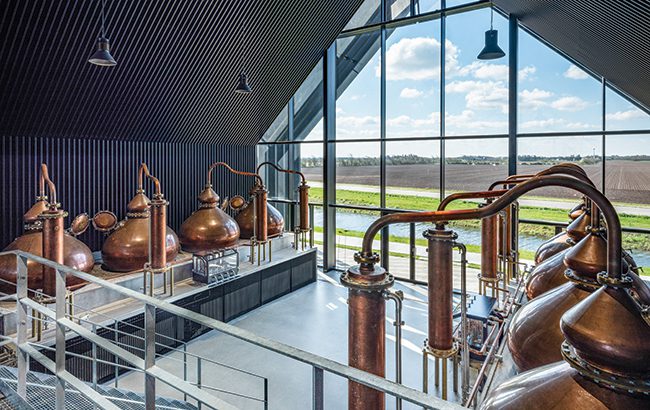Stauning cuts jobs as Diageo exits
By Nicola CarruthersDenmark’s largest whisky maker, Stauning, has cut approximately 25% of its workforce following Diageo’s exit from Distill Ventures.

Stauning co-founder Alex Munch told The Spirits Business the company had made 13 of its workers redundant, predominantly in the US and on the marketing side of the business.
The decision was made after Diageo announced it would no longer be bringing new brands into the Distill Ventures accelerator programme.
Diageo acquired a minority stake in Stauning, Denmark’s largest whisky distillery, in 2015 through its investment arm Distill Ventures. The Johnnie Walker owner previously invested around £50 million (US$64m), which allowed Stauning to open a new distillery in 2018.
But following Diageo’s exit from Distill Ventures, Stauning has had to “downscale” in the US “to be more on the safe side”, Munch noted. “It’s more about not scaling up that fast any longer in the US.”
Munch said his company was notified of Diageo’s decision to leave Distill Ventures by phone “two-and-a-half weeks ago”, prompting Stauning to swiftly act to safeguard the business.
Explaining the decision to cut jobs, he noted it was due to “investing so heavily in scaling up the business in a lot of different markets, and especially in the US, which is very expensive, and where we see a lot of uncertainty in the market right now with tariffs coming on”.
As such, the company will focus more on its home market of Denmark, and EU countries for now.
Munch noted that the business would assess the environment in the US and Europe over the coming months, as potential tariffs loom over spirits.
The EU recently postponed its 50% tariff on American whiskey, which was due to come into effect on 1 April.
Diageo’s exit plan from Stauning and sales results
There is also still uncertainty over Diageo’s exit plan from Stauning going forward.
Munch said: “We’re still also waiting for Diageo to come back to us on how we will exit and what will happen over the next month. We don’t have that information yet.”
Stauning saw its sales grow by approximately 50% last year, helped by Diageo’s investment, Munch noted. Growth was led by markets such as Germany and Denmark.
Munch said Diageo had “invested heavily in Stauning” to help it expand into new markets, hire sales and marketing people, and launch campaigns to “grow our brand more than you would usually see in a business like this”.
“So not getting that investment will, of course, have an impact on Stauning whiskey, because we’ve been over-investing for some time to build the brand rapidly. So it’s a new world that we will need to face going into 2025 right now,” he said.
Last year, the business opened up a number of new markets, including Japan, Taiwan, Australia, Singapore and Hungary.
Munch noted: “The contract [with Diageo] has always been that we open our own distribution and that was very important to us when we did the contract back in 2015. We wanted to be as liberal as possible in our movements, so they can’t decide where we go, who we go to.
“So we basically are still a craft distillery, independent in a sense, where they supply us with the money for investments in sales and marketing. So we’ve done everything ourselves over the last 10 years.”
Production reduction
The business also took the decision to cut its production by approximately 40% last year, Munch said.
“When we started up, we had a production plan in the new distillery,” he explained. “It was just a best guess on how much we would produce with 24 new pot stills. It was a new thing for us, and actually we’ve been performing so much better since the distillery expansion. So we had 30%-40% higher production than planned.
“So we decided last year because we had so much inventory, and if we continue at this rate, that we should build a new warehouse because the production was so high. So we decided to actually scale down the production to be able to fit the demand.
“We were just overproducing versus the demand of whisky and the sales plan. So that was the first step. Then over 2023 and 2024 we’ve had quite a growth, but we’ve still just scaled down a little bit more this year.”
He added that the company has not made any job cuts in production.
“Together with Diageo, we’ve had quite a growth plan since they started investing in us in 2015/16,” he continued.
“We see right now that the spirits world is in decline everywhere. That also has some implications on Stauning whisky of course, even though we had 50% growth. From 2023 to 2024 we actually had a very good year versus a lot of other brands.”
Stauning has also seen its sales grow during the first quarter of 2025, up by 10%, compared with the same period last year.
Munch added: “We still want to be a substantial brand in Europe, the US and APAC [Asia Pacific], and still hope to be able to sell a lot of rye whisky, even though we can’t call it rye whisky at the moment.”
Related news
Union agrees deal with Diageo over Crown Royal closure
